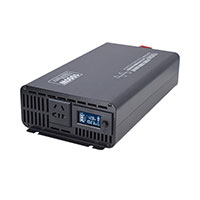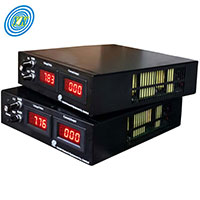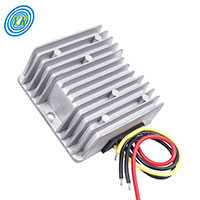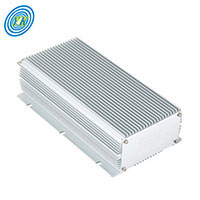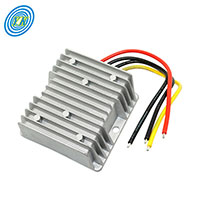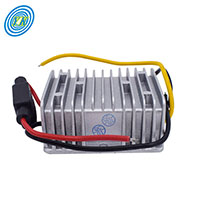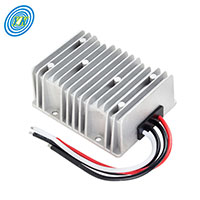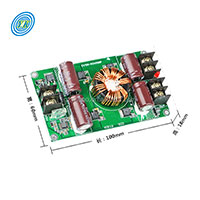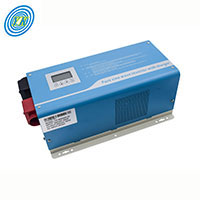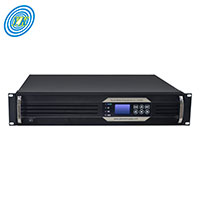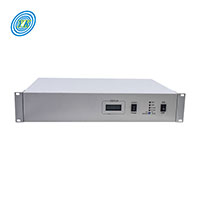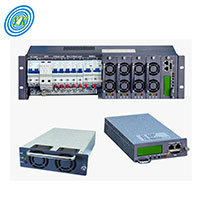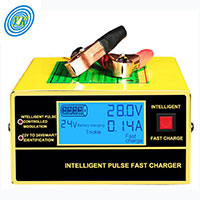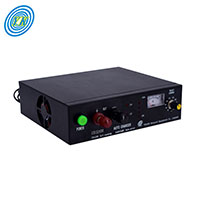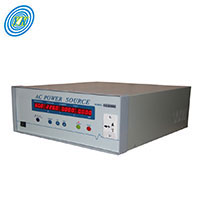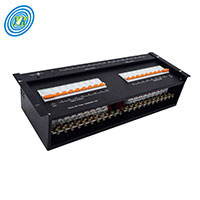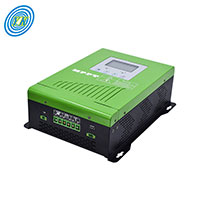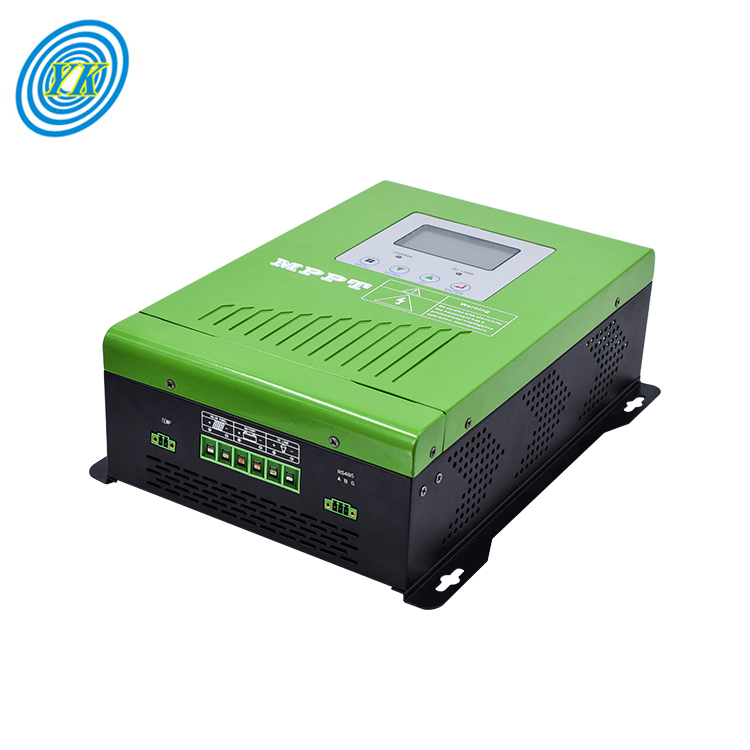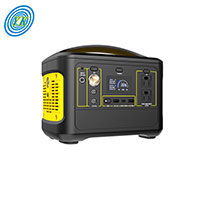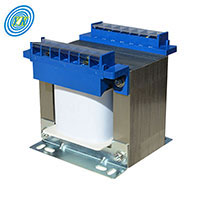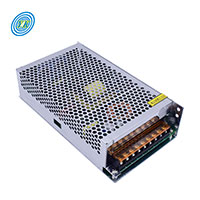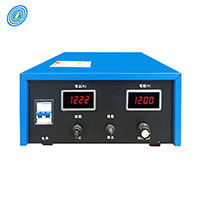Aircraft Inverter for Aviation Electronics
Click: 2019 Date: 09/12/2023 2::42::45 PM
Aircraft Inverter for Aviation ElectronicsAn inverter is an electrical device that changes direct current (DC) to alternating current (AC). In aircraft, inverters are commonly used to supply AC power from DC sources such as batteries. The converted AC can be at any required voltage and frequency with the use of appropriate transformers, switching, and control circuits.Essential Component in AircraftPower converters, including inverters, are essential components in most aircraft concepts. They are used to convert from DC to AC power, or vice versa. These devices are an order of magnitude larger, lower weight, and higher efficiency compared to state-of-the-art aircraft.Advancements in Aircraft InvertersNASA is sponsoring or performing work to achieve power densities 2-3 times the state of the art for converters in the MW or larger class. This research sets the path to achieving the performance, functions, and safety needed for large electric and hybrid electric aircraft.Applications of Aircraft InvertersAircraft inverters have various applications, including in the High Lift Motor Controller (HLMC) and Generalized Intelligent Motor Control (GIMC) for the X-57 Aircraft. These systems use a 6-switch, DC to AC 3-phase inverter with a microcontroller-based control. The inverters are passively air-cooled, providing efficient thermal management.The High-Efficiency Electric Aircraft Thermal Research (HEATheR) Converter uses a 36-switch multi-level interleaved DC to AC 3-phase inverter with an FPGA control. This system uses a liquid cold plate cooling system for superior thermal management.Future of Aircraft InvertersThe future of aircraft inverters is promising with advancements in electric and hybrid electric propulsion systems. Companies like Rolls-Royce intend to become the leading supplier of these systems for aircraft, while Siemens continues to support the transition to electric aviation with its digital solutions portfolio.In conclusion, the aircraft inverter is a crucial component in aviation electronics, providing the necessary AC power from DC sources. With ongoing research and advancements in technology, the efficiency, power density, and performance of these inverters continue to improve, paving the way for the future of electric and hybrid electric aviation.
Multi-Level Inverter for High-Power Applications
Click: 1854 Date: 09/12/2023 2::09::12 PM
Multi-Level Inverter for High-Power ApplicationsMulti-level inverters are power electronic devices used in high-power applications to convert DC power into AC power. They provide higher voltage levels and improved waveform quality compared to traditional two-level inverters. This article will discuss the working principle, advantages, and applications of multi-level inverters in high-power systems.Working Principle: A multi-level inverter consists of multiple power electronic switches and capacitor voltage levels. The switches are controlled in such a way that they generate a stepped waveform with multiple voltage levels. By combining these voltage levels, a multi-level inverter can produce a sinusoidal output waveform with reduced harmonic distortion and improved voltage quality.Advantages of Multi-Level Inverters:Reduced Harmonic Distortion: Multi-level inverters can produce output waveforms with lower harmonic distortion compared to two-level inverters. This is achieved by generating voltage levels that approximate the desired sinusoidal waveform more closely.High Voltage Capability: Multi-level inverters can achieve higher voltage levels by stacking multiple voltage levels in series, allowing them to handle high-power applications efficiently.Improved Efficiency: The reduced harmonic distortion and improved waveform quality of multi-level inverters result in improved system efficiency and reduced power losses.Scalability: Multi-level inverters can be easily scaled up to handle higher power levels by adding more voltage levels and power electronic switches.Applications of Multi-Level Inverters:High-Power Drives: Multi-level inverters are commonly used in high-power motor drives, such as those used in industrial applications or electric traction systems. The improved waveform quality and reduced harmonic distortion make them suitable for driving high-power motors efficiently.Renewable Energy Systems: Multi-level inverters are used in renewable energy systems, such as wind turbines or solar power plants, to convert the DC power generated by these sources into AC power for grid integration. The high voltage capability and improved efficiency of multi-level inverters make them ideal for handling the power generated by these systems.Electric Vehicle Charging: Multi-level inverters can be used in high-power electric vehicle charging stations to convert the grid AC power into the required DC power for charging the electric vehicles. The high voltage capability of multi-level inverters enables faster charging rates and efficient power conversion.Multi-level inverters are key components in high-power applications, providing improved waveform quality, reduced harmonic distortion, and high voltage capability. They find applications in various fields, including high-power drives, renewable energy systems, and electric vehicle charging. The advancements in multi-level inverter technology continue to enhance the efficiency and performance of high-power systems.
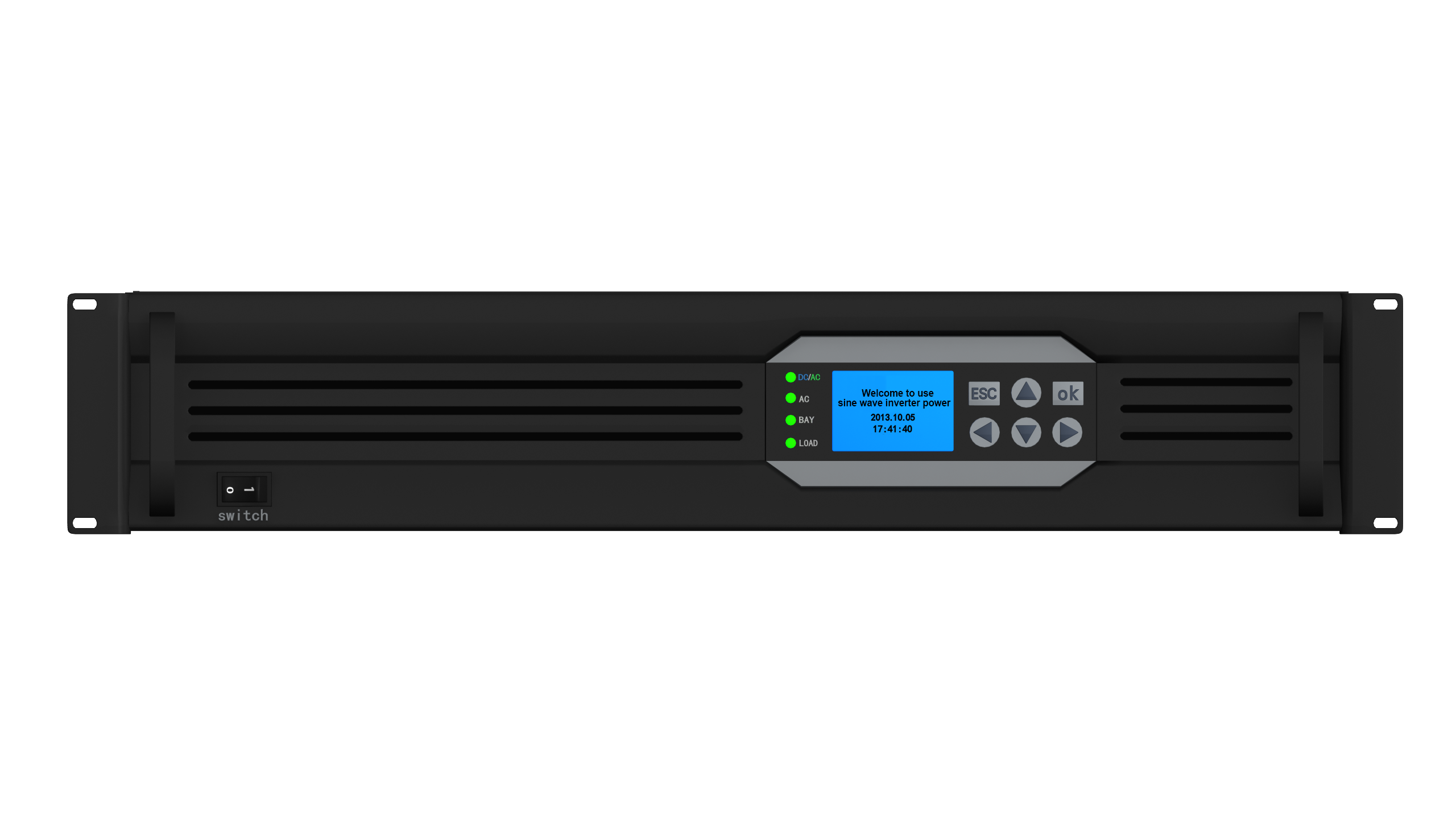
Variable Frequency Drive Inverter for Industrial Applications
Click: 1967 Date: 09/12/2023 11::22::18 AM
Variable Frequency Drive Inverter for Industrial ApplicationsA variable frequency drive (VFD), also known as an AC drive, AC variable speed drive, or variable voltage variable frequency drive, is a type of AC motor drive that controls the speed and torque of an electric motor by varying the frequency of the input electricity. VFDs are widely used in industrial applications to provide precise control over motor speed, resulting in improved energy efficiency and process control.The basic components of a VFD system include an AC motor, a main drive controller assembly, and a drive/operator interface. The AC motor used in a VFD system is typically a three-phase induction motor, although other types of motors can be used in specific situations. VFDs are designed to work with induction motors that are specifically designed for use with variable frequency drives, taking into account the elevated voltage stresses imposed by the VFD.VFDs use power electronics technology to convert the AC line input into an AC inverter output with variable frequency and voltage. The VFD controller consists of three main sub-systems: a rectifier bridge converter, a DC link, and an inverter. The rectifier bridge converter converts the AC line input into a DC voltage, which is then smoothed out by a capacitor in the DC link. The inverter, using active switching elements, converts the filtered DC voltage into a quasi-sinusoidal AC voltage output with variable frequency and voltage.There are various topologies of VFD inverters, including voltage-source inverter (VSI), pulse width modulation (PWM), and cascaded H-bridge inverter, among others. VSI drives are the most common type and provide higher power factor and lower harmonic distortion compared to other topologies.In industrial applications, VFDs offer several advantages:Energy Efficiency: By controlling the speed of the motor, VFDs can match the motor's speed to the required load, resulting in energy savings compared to fixed-speed operation.Process Control: VFDs allow for precise control of motor speed, torque, and acceleration, enabling better process control in various applications.Soft Start and Stop: VFDs provide smooth acceleration and deceleration of motors, reducing mechanical stress and extending motor lifespan.Reduced Maintenance: VFDs can help reduce wear and tear on motors and associated equipment, resulting in lower maintenance costs.Industrial applications that benefit from VFDs include:Fans and Blowers: VFDs can control the speed of fans and blowers to match the required airflow, resulting in energy savings and improved process control.Pumps: VFDs can adjust the speed of pumps to match the required flow rate, reducing energy consumption and providing precise control over fluid handling processes.Conveyors: VFDs can control the speed of conveyors, allowing for efficient material handling and reducing energy consumption during low-demand periods.Machine Tools: VFDs enable precise control over the speed and torque of machine tools, improving machining accuracy and reducing energy consumption.In conclusion, a variable frequency drive (VFD) inverter is a crucial component in industrial applications that require precise control over motor speed and torque. By varying the frequency and voltage of the input electricity, VFDs provide energy efficiency, improved process control, and reduced maintenance costs. They find applications in various industries, including fans and blowers, pumps, conveyors, and machine tools.
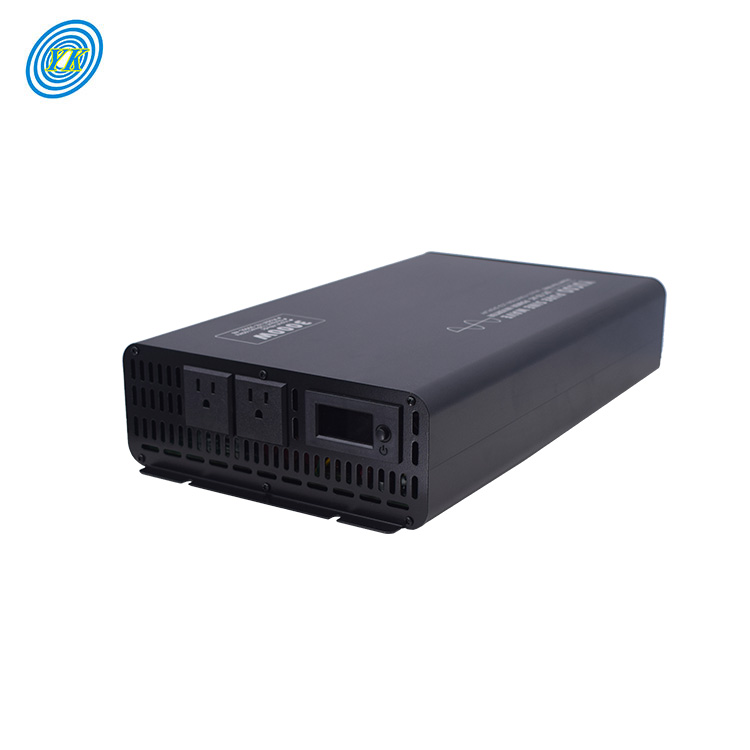
Motor Drive Inverter for Electric Vehicles
Click: 1280 Date: 09/12/2023 10::35::40 AM
Motor Drive Inverter for Electric VehiclesElectric vehicles (EVs) are gaining popularity due to their environmental benefits and energy efficiency. The motor drive inverter is a crucial component in the electric drive train system of EVs. It converts the direct current (DC) from the battery into alternating current (AC) to drive the electric motor. This article will explore the importance of motor drive inverters in electric vehicles and discuss their key features and control strategies.Motor Drive Inverter Functionality: The motor drive inverter in an electric vehicle is responsible for controlling the electric motor and determining the vehicle's driving behavior. By converting the DC power from the battery into AC power, the inverter enables precise control of the motor's speed and torque, ensuring efficient and smooth operation of the vehicle. The main inverter is the primary component that performs this function.Key Features of Motor Drive Inverters: Motor drive inverters for electric vehicles possess several important features that contribute to their efficiency and performance. These features include:High torque density: Motor drive inverters are designed to provide high torque output with compact size and weight, allowing for improved vehicle dynamics.Reliability and durability: Inverters must meet stringent reliability and durability requirements to ensure the safety and longevity of the vehicle.High efficiency: Inverters strive for high efficiency within the operating spectrum to maximize energy economy and optimize users' capital investment.Power factor control: Inverters employ various control strategies, such as unit power factor control, to achieve a power factor of 1, thereby utilizing the inverter capacity efficiently.Control Strategies for Motor Drive Inverters: Motor drive inverters utilize different control strategies to achieve optimal performance and efficiency. Some common control strategies include:Space Vector Pulse Width Modulation (SVPWM): SVPWM is a popular pulse width modulation technique used in motor drive inverters. It provides precise control of motor voltage and current, improving overall motor performance.Sinusoidal Pulse Width Modulation (SPWM): SPWM is another widely used modulation technique that generates a sinusoidal waveform to control the motor's speed and torque.Maximum Torque per Ampere (MTPA) control: MTPA control aims to achieve maximum torque production per ampere of current supplied to the motor, enhancing overall motor efficiency.Power factor control: Inverters employ control strategies to maintain a power factor of 1, minimizing reactive power output and maximizing motor torque capacity.Motor drive inverters play a crucial role in the electric drive train systems of electric vehicles. They convert DC power from the battery into AC power to control the speed and torque of the electric motor. Motor drive inverters are designed with features such as high torque density, reliability, durability, and high efficiency. They employ various control strategies, including pulse width modulation techniques and power factor control, to optimize motor performance and energy efficiency. As electric vehicles continue to evolve, motor drive inverters will remain essential components in achieving sustainable and efficient transportation.
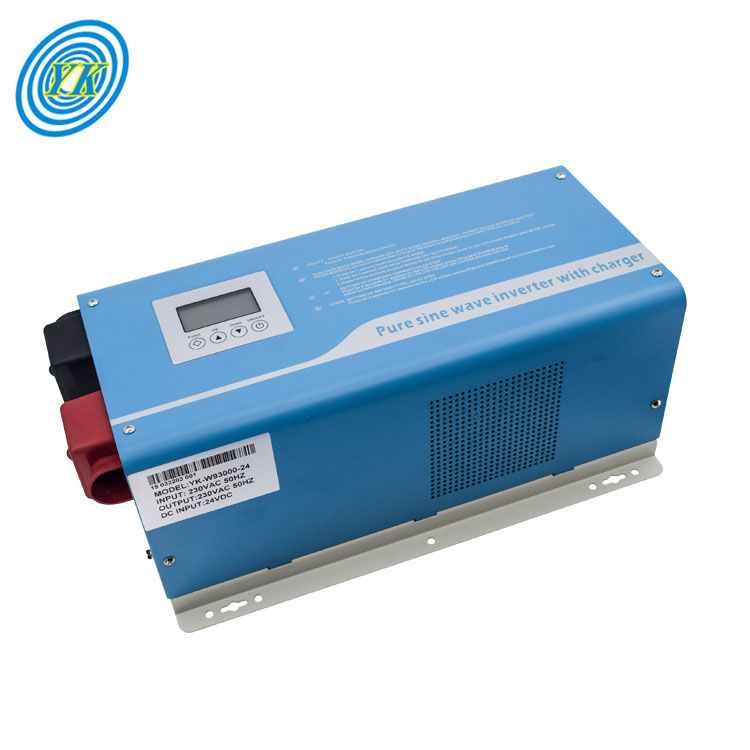
Battery Inverter for Energy Storage Systems
Click: 1272 Date: 09/12/2023 09::44::56 AM
Battery Inverter for Energy Storage SystemsBattery Energy Storage Systems (BESS) play a crucial role in storing and distributing energy in the form of electricity. They consist of one or more batteries that store electrical energy for use at a later time. Battery inverters are an essential component of BESS as they convert the DC power from the batteries into AC power that can be used in homes, businesses, or fed back into the grid.Advantages of using a BESS and Battery Inverters:Reduced Costs: BESS allows for the storage of excess energy generated by renewable sources, such as solar or wind power. This stored energy can be used during periods of high demand or when renewable sources are not generating enough power. By utilizing stored energy, BESS can reduce costs by avoiding the need for expensive peak power generation or grid upgrades.Improved Power Quality: Battery inverters help smooth out voltage fluctuations and provide a stable power supply. They can regulate the flow of electricity to and from the grid, ensuring a consistent and reliable energy supply.Backup Power: During power outages or extreme weather events, BESS with battery inverters can provide backup power. This is especially beneficial for critical applications where uninterrupted power supply is essential, such as hospitals, data centers, or telecommunications infrastructure.Peak Shaving: BESS can reduce peak electricity demand by using stored energy to meet part of the demand. This helps to lower overall electricity costs and reduces the need for new power plants or grid upgrades.Microgrids: Battery energy storage systems can be integrated into microgrids, which are small, independent power systems that can operate connected or disconnected from the main grid. BESS with battery inverters can provide backup power during outages and help stabilize the grid by providing energy during peak demand periods.Technologies and Components of BESS:Inverters: Inverters are devices that transform direct current (DC) into alternating current (AC), which is the type of electricity used in homes and businesses. Battery inverters play a crucial role in converting the DC power from batteries into usable AC power.Control Components: Control components manage the charging and discharging of the batteries and regulate the flow of electricity to and from the grid. They ensure efficient operation and optimal utilization of stored energy.Multiple Battery Modules: BESS consists of multiple battery modules, which are composed of multiple batteries that work together to store and release energy. The use of multiple batteries allows for scalability and flexibility in energy storage capacity.Flow Batteries: Flow batteries are a newer type of BESS that offer a longer lifespan compared to traditional lead-acid or lithium-ion batteries. They store energy in an electrolyte solution, which can be redirected to different parts of the battery as needed.Flywheels: Flywheels are another type of energy storage system used in BESS. They store and release electricity using kinetic energy. Flywheels are typically used for short-term storage applications, such as load leveling or backup power generation.Battery inverters and BESS are enabling the adoption of renewable energy sources and contributing to the development of a more sustainable and resilient energy infrastructure. They provide numerous benefits, including cost reduction, improved power quality, backup power supply, and grid stability. With advancements in technology and increasing demand for clean energy solutions, the role of battery inverters in energy storage systems is becoming increasingly important.
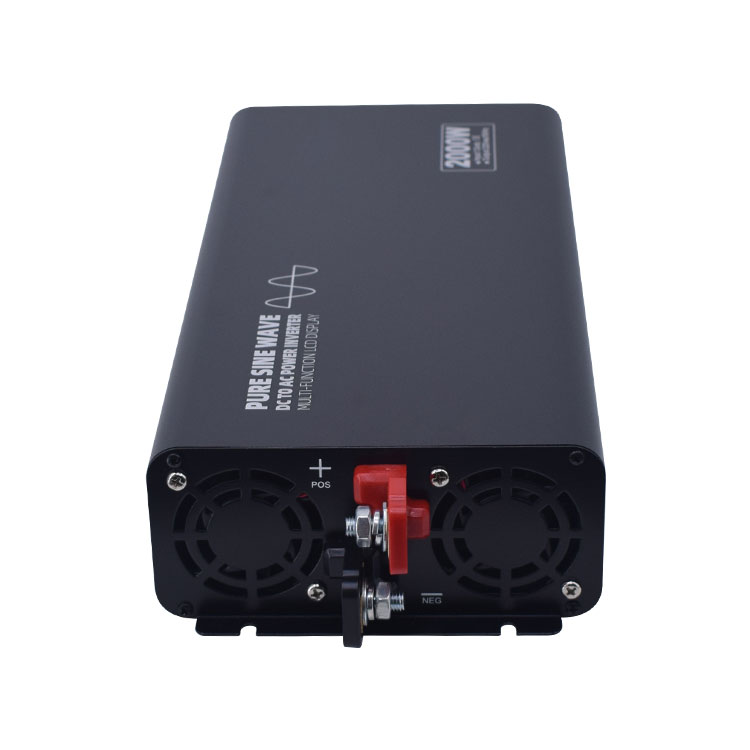
Micro Inverter for Increased Efficiency
Click: 1243 Date: 09/12/2023 09::38::21 AM
Micro Inverter for Increased EfficiencyA microinverter is an inverter that converts DC power to AC power at the individual solar panel level, rather than using a centralized inverter like traditional string inverters. Microinverters have gained popularity in the solar market due to their ability to instantly convert DC power generated by solar panels to AC power. Here are some key advantages and disadvantages of microinverters:Advantages of micro inverters:Self-contained system: Each microinverter paired with a solar panel forms a self-contained solar PV system. This allows for flexibility in system configuration and orientation.Panel-level monitoring: Microinverters isolate the output of each individual solar panel, enabling monitoring at the panel level. This helps identify underperforming panels and allows for immediate troubleshooting and maintenance.Scalability: Microinverters can be implemented on a small scale to match a budget and expanded as needed in the future. Additional solar panels can be easily added by connecting them to their own microinverters.Safety: Microinverters convert DC power into AC power instantly, eliminating the safety risks associated with high-voltage DC electricity. This makes them a safer option for residential installations.Longer warranty: Microinverters typically come with longer warranty periods compared to string inverters. For example, microinverters often have a 25-year warranty, while string inverters typically have a 5-year warranty.Real-time power generation tracking: Microinverters, equipped with Maximum Power Point Tracking (MPPT) controllers, track the real-time solar intensity and temperature of the solar cells. This allows for better optimization and overall performance of the panels.In conclusion, microinverters offer advantages such as panel-level monitoring, scalability, safety, and longer warranties. They are particularly beneficial in situations where shading or dirt on one panel can affect the overall output of the system. However, it's important to consider the higher cost and installation complexity compared to string inverters, especially for larger systems.
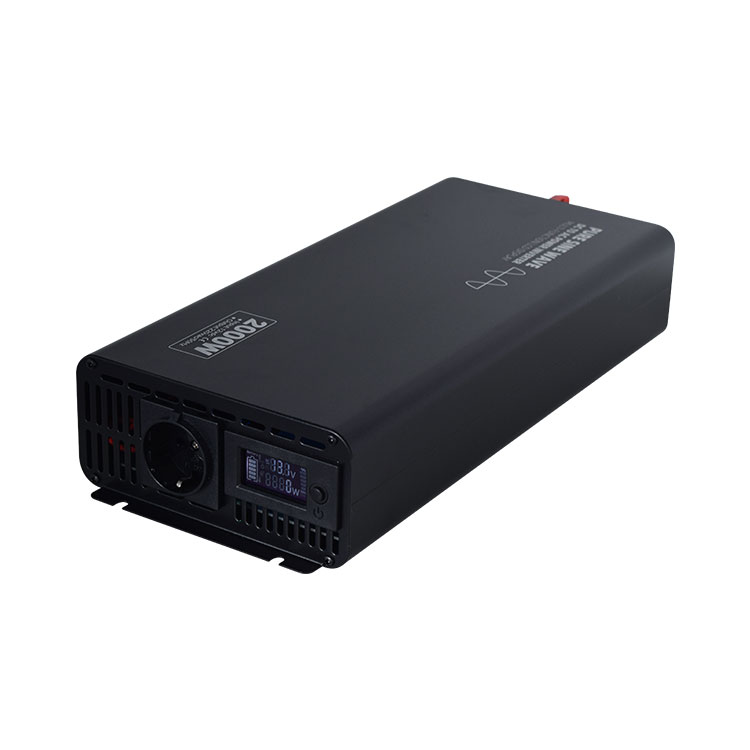
Grid-Tied Inverter for Smart Grids
Click: 1097 Date: 09/12/2023 09::34::34 AM
Grid-Tied Inverter for Smart GridsA grid-tied inverter plays a crucial role in integrating renewable energy sources, such as solar or wind, with the existing power grid. It converts the DC power generated by these sources into AC power that can be fed back into the grid or used locally. This article aims to explore the performance and application of a grid-tied inverter in smart grids, focusing on a specific case study.Literature Review: Several research studies have focused on inverter control techniques for grid-tied renewable and alternative power systems. Khan et al. (2020) conducted an in-depth analysis of grid-connected solar inverters, discussing different configurations, modulation methods, and control strategies. They categorized various multilevel inverter topologies and modulation methods and described different control reference frames for inverters. Other studies have emphasized the grid integration of sustainable energy technologies and the dynamic behavior of generation systems during grid faults and voltage sags.System Overview: The investigated system in this study consists of a centralized grid-tied one-stage three-level diode clamped inverter connected to a hybrid PV-fuel cell (FC) system. The inverter operates under a synchronous PQ open-loop control scheme, aiming to achieve a current harmonic distortion of below 5%. The system includes a 150 kW/1400 V FC, a 150 kW/700 V PV array, a 265 kW/415 V inverter, and a passive LCL filter connecting the grid and the inverter.Performance Evaluation: The performance of the grid-tied inverter system was evaluated using two operating scenarios. In scenario one, the hybrid PV-FC system produces power to feed a neighborhood load while also transferring the surplus to the grid. In scenario two, a neighborhood load of 365 kW is powered by the grid-tied PV-FC inverter, with additional power imported from the grid. The study demonstrated that the proposed system performed well, achieving a current harmonic distortion of about 0.33%.Conclusion: In conclusion, the grid-tied inverter is a key component in smart grids, enabling the integration of renewable energy sources with the existing power grid. This article explored the performance and application of a grid-tied inverter in a specific case study. The study demonstrated the effectiveness of a centralized grid-tied one-stage three-level diode clamped inverter connected to a hybrid PV-FC system, achieving low current harmonic distortion. Further research and development in this field can lead to more efficient and sustainable energy systems for smart grids.
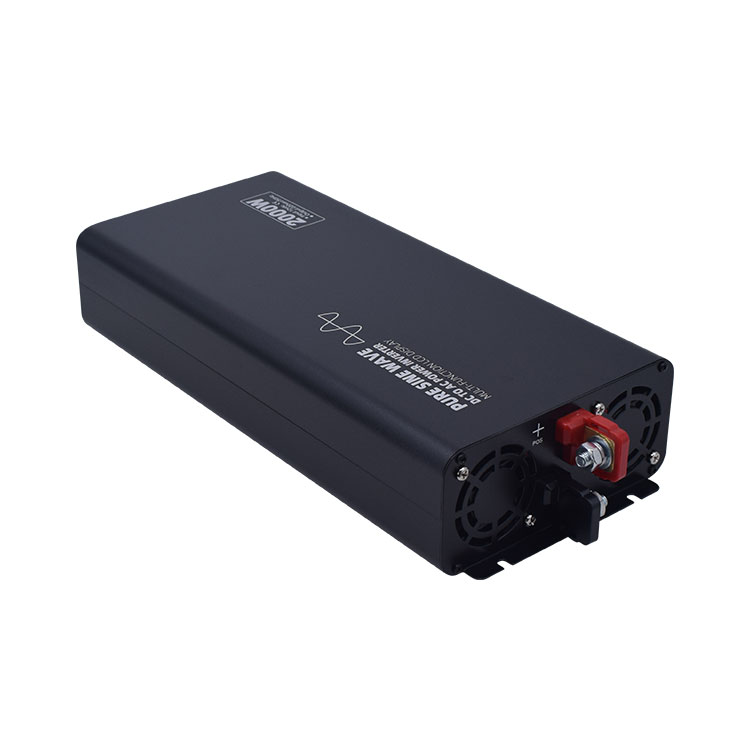
Solar Inverter for Renewable Energy Systems
Click: 1102 Date: 09/12/2023 09::24::03 AM
Solar Inverter for Renewable Energy SystemsSolar inverters play a crucial role in renewable energy systems by converting the direct current (DC) power generated by solar panels into alternating current (AC) power that can be used in homes, businesses, or fed back into the grid. This article will explore the importance of solar inverters in renewable energy systems and their various applications.1. Introduction to Solar Inverters Solar photovoltaic (PV) systems generate electricity from sunlight through the use of solar panels. However, the electricity produced by solar panels is in the form of DC power, which is not directly compatible with most electrical appliances and the power grid. Solar inverters bridge this gap by converting the DC power into AC power, which is the standard form of electricity used in homes and businesses.2. Types of Solar Inverters There are several types of solar inverters available, each with its own characteristics and applications. Some of the common types include:String Inverters: These are the most common type of solar inverters used in residential and small commercial systems. They are connected to a string of solar panels and convert the DC power from the entire string into AC power.Micro Inverters: Unlike string inverters, micro inverters are installed on each individual solar panel. This allows for independent power conversion, resulting in improved system performance and flexibility.Central Inverters: Central inverters are used in large-scale solar power plants. They are designed to handle a high amount of power and are typically connected to multiple strings of solar panels.Battery Inverters: Battery inverters are used in solar energy storage systems, where excess energy generated during the day is stored in batteries for later use. These inverters convert the DC power from the batteries into AC power when needed.3. Grid Connection and Control Solar inverters are also responsible for grid connection and control in renewable energy systems. They ensure that the AC power generated by the solar panels is synchronized with the grid frequency and voltage, allowing for seamless integration with the existing electrical infrastructure. In addition, solar inverters incorporate control mechanisms to ensure the safety and stability of the grid during abnormal conditions, such as grid faults or voltage fluctuations.4. Advancements in Solar Inverter Technology The field of solar inverter technology is constantly evolving, with advancements aimed at improving efficiency, reliability, and functionality. Some of the recent developments include:MPPT (Maximum Power Point Tracking): MPPT algorithms in solar inverters optimize the power output of the solar panels by continuously tracking the maximum power point, which is the operating point that maximizes the power generation.Smart Inverters: Smart inverters incorporate advanced monitoring and communication capabilities, allowing for remote monitoring, troubleshooting, and grid management. They can also provide valuable data on system performance and energy production.Hybrid Solar Inverters: Hybrid solar inverters combine the functionality of a solar inverter with that of a battery inverter, allowing for seamless integration of solar power generation and battery storage in a single device.Conclusion Solar inverters are an essential component of renewable energy systems, enabling the efficient conversion of solar energy into usable electricity. They play a crucial role in grid integration, power control, and system monitoring. With ongoing advancements in technology, solar inverters continue to improve in efficiency, functionality, and reliability, contributing to the widespread adoption of solar PV systems for a sustainable and clean energy future.
